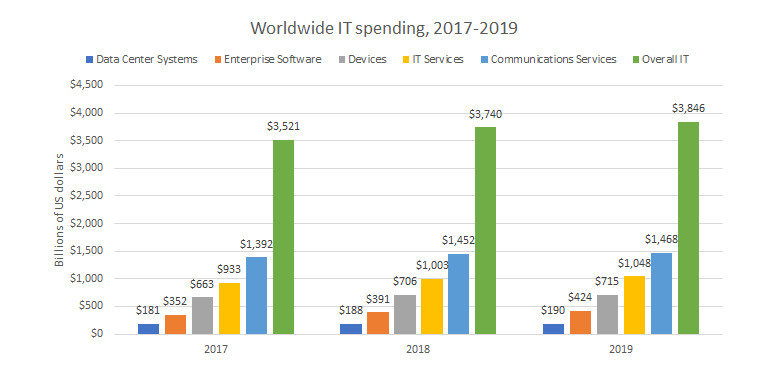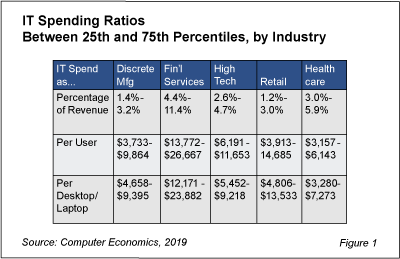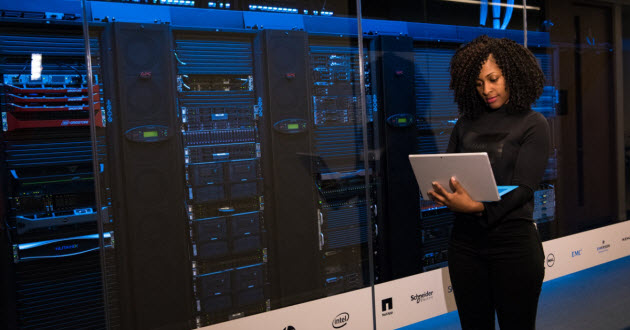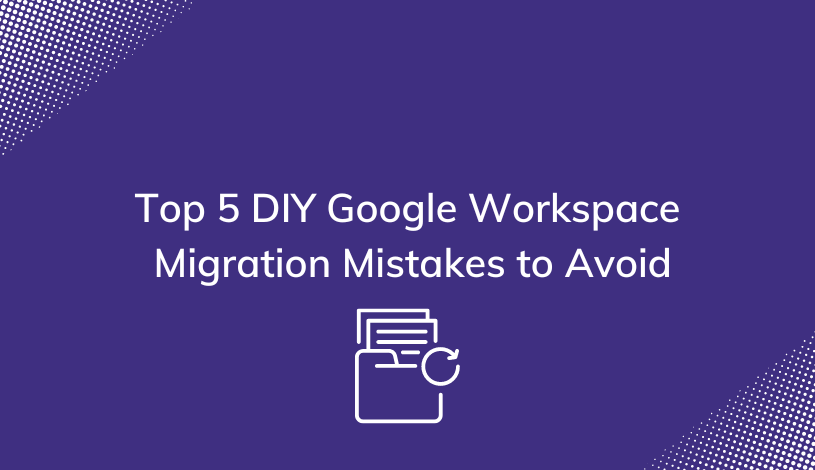IT Budget Allocation & Spending Per Employee by Industry
One of the most important aspects of a business is making good decisions allocating their budget and regarding the future of their spending. Although the future is never certain, there is still much to be said for preparing an educated budget based on current geopolitical and macroeconomic trends. Global IT spending has grown immensely over the past few years according to the research director at Gartner. The trend of integrating IT into all services and products (not only as a backend system), allows companies to truly understand the value of their IT teams.
How IT Budgets are Allocated
According to IT service management company Gartner, worldwide IT spending for 2018 was $3.74 trillion, and in 2019 this was projected to reach $3.85 trillion in 2019. When allocating IT budgets, there are 5 main branches of distribution for these budgets: data center systems, enterprise software, devices, IT services and communication services. This is displayed in the chart below:

source: ZDNet
Let's take a closer look at these IT spending categories:
Data Center Systems
These are essentially the facilities in which the IT for any business, or company, houses and manages all of its data. These centers are extremely important to the daily operation of an IT branch, which makes sense considering 38.6% of all IT spending has gone towards data systems in 2019. One potential way of saving on data center costs is to move your data from your servers to the cloud, or incorporate your data center spending into your software spend with a product like G Suite or Google Cloud Platform.
Enterprise Software
An enterprise is defined as “a unit of economic organization or activity.” In IT, this is specifically related to a business or organization. Generally the term enterprise is used to describe a large organization with many different people involved. Although this is most common, an enterprise can still be of any size, from a single self employed freelancer, to a large corporation or government entity.
Enterprise software only makes up 11% of IT spending budgets, but it is still hugely important in tech companies. Enterprise software aids in general performance and common business applications. It creates tools for modeling the entire organization as well as building apps specifically for the organization. It is often characterized as EAS and SaaS, with popular SaaS softwares being Slack, Salesforce.com, Monday.com, Dropbox, and Zendesk. EAS is typically owned by the company, giving users much more ability to customize it and hosted on physical servers while SaaS is hosted on cloud servers.
Devices
This category includes things such as computers, laptops, mobile devices, tablets, networking equipment and other hardware. Without devices, modern day companies simply cannot exist, so it is interesting that the budget allocation is only 18%, but in comparison to other parts of an IT budget, it is a relatively low cost.
Related: How Chrome Enterprise Solutions Can Empower Your Workforce
IT Services
These are services related to data and technology infrastructure. This can include firewalls, computing, software, APIs, and networks. This makes up around 27% of budgets, along with data storage, synchronization and AI. AI is a newer technology and is seen as the way of the future. This is actually something that many companies are having to watch carefully with their spending, as it can get very expensive.
Communication Services
For IT, communication services make up around 38% of the budget. This includes telecom, internet, data, video and satellite spending. These have also been converged with software communication applications which help businesses achieve greater collaboration, and increase productivity.
Top Performers vs Everyone Else
What differentiates top performers from the rest of the industry has a lot to do with spending patterns. What most top performers do compared to other people in the industry, is they examine IT spending per employee. This is important because it gives a more accurate outlook on what is happening in the company.
Although examining spending per employee can be a good measure for budgeting, a company may have more users than they do employees. Examining users allows a more accurate comparison since not all employees may be utilizing IT. Another way to examine IT spending is to examine per computer. There are many environments in which users may share computers, or a user may have more than one computer such as a laptop and desktop. By analyzing this, there is less chance for waste, and therefore better understanding of possible outcomes.
Related: How to Reduce Operating Expenses in Business
IT Spending Ratios
In four main industries: discrete manufacturing, financial services, high tech, retail and health care, the IT spend greatly differentiated. By looking at the table below, you can see that by comparing spending per user alone, financial services topped the list, and had a slightly higher spend per user as compared to per desktop/laptop. Using this data is extremely helpful to calculate IT spending and budget. It allows you to make an educated budget and avoid over spending.

source: Computer Economics
Understanding how to properly allocate an IT budget could be, not only, the difference of being a top performer, but also the success and failure of a company. Whether it is understanding which areas spending should be going, or how to compare spending, putting effort into your budget is very important. Following the trends will only make it more of a realization on how year by year, the demand for IT resources continues to increase, along with its spending.







